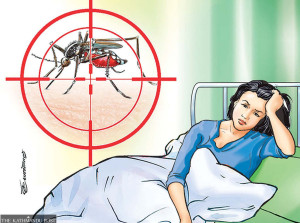Health
Here’s how you can quit smoking
The highly addictive tobacco is one of the leading causes of death worldwide. Here’s how you can break free of this addiction and lead a healthy life..jpg&w=900&height=601)
Dr Rakshya Pandey
One in 10 people aged 15-24 and six in 10 people among the age group of 55-64 smoke in Nepal, according to a World Health Organization survey conducted in 2008. Nearly five in 10 school students are exposed to second-hand smoke in public places. There is a high prevalence of tobacco use even in school students, health professional students and school personnel in Nepal.
The harmful effects of smoking were first reported in 1964 and more than 50 years later, we are still discovering more negative health effects of smoking. Yet, people are addicted to it.
According to the Institute of Health Metric and Evaluation 2012 data, 23.8 percent of the Nepali population smoke daily. In 2016, 37.8 percent of Nepali men and 9.5 percent of Nepali women smoked either daily or occasionally. In 2017, the number of Nepalis who died due to the effects of active or passive smoking was 24,241. From that number, 3,684 were people who had never smoked but were exposed to second-hand smoking.
Understanding the science behind how nicotine causes addiction may help one take a step towards smoking cessation. Effective treatment for tobacco dependence is available and it is never too late to quit smoking.
Why is it so difficult to quit smoking?
Smoking or tobacco use is an addiction and not just a simple habit. Like any addiction, smoking can be difficult to quit.
Although cigarette contains a large number of chemicals along with tobacco, it is the nicotine that is present in the tobacco that is addictive. Tobacco in any form—rolled cigarettes, cigar, hookah, chewing tobacco, e-cigarette (nicotine in the liquid is usually from tobacco)—contains nicotine. When one smokes a cigarette, the nicotine enters the lungs and is quickly absorbed by the blood vessels. It then reaches the brain within 6-10 seconds of smoking. The brain has nicotine receptors that release a chemical called dopamine, which makes us feel good. Nicotine stimulates the brain and that makes smokers feel that cigarettes improve their focus or attention. A smoker’s brain starts taking this nicotine-induced effect as a “reward” that makes them feel good and they crave for more. This feeling is what makes people get addicted to smoking.
The opposite process happens when a regular smoker tries to quit smoking. He or she may experience unpleasant withdrawal symptoms because the nicotine receptors are empty. This makes the smoker crave for the “feel good” nicotine effect. This addiction may vary from mild to strong addiction in different people. Therefore, despite their willingness to quit, smokers have difficulty quitting smoking without professional help.
Apart from the addiction, there is also a behavioural component to smoking. Many smokers relate the act of smoking as a ritual or part of their daily routine. Some smoke more in certain conditions, like while drinking alcohol or tea/coffee, driving or in response to certain cues like feeling stressed or anxious. This together with the nicotine effect propagates one to continue smoking.
What are the benefits of quitting smoking?
Smoking is the leading preventable cause of death. Half of the smokers in the world can be expected to die because of smoking-related illnesses. Even smokers who smoke one to less than 10 cigarettes a day have higher chances of dying and having cancer than those who have never smoked.
However, it is never too late to quit. A person who quits smoking at age 30 will gain about 10 years of life, whereas smokers who quit at the age of 40, 50, or 60 years gain 9, 6, or 3 years of life, respectively. Quitting after 65 years can also increase your life by 2 to 4 years. Quitting smoking benefits even those who have already developed smoking-related diseases.
Specific health benefits
Besides adding years to your life, quitting smoking has several other health benefits. It is particularly helpful for patients who have heart problems. Patients who smoke even one cigarette a day have a 50 percent increased risk of heart disease and 25 percent increased risk of stroke than non-smokers. This rate goes much higher with the increase in the number of cigarettes smoked. For patients with cardiovascular diseases who quit smoking, the risk of dying can be reduced to 36-38 percent within 3-5 years of quitting smoking.
Smoking cessation also significantly diminishes the risk of cancer. Quitting smoking before the age of 40 reduces the risk of smoking-related cancers—like cancer of the lungs, oesophagus, stomach, colon, mouth and throat, voice box—by up to 90 percent. The risk of lung cancer can be reduced to half in 10 years of smoking cessation.
It is needless to say that quitting smoking will ensure your lungs are healthier. Smoking increases the rate of lung ageing, causes lung diseases like chronic bronchitis and emphysema, and makes asthma control worse.
Smoking is also related to an increased risk of infertility in men and women, erectile dysfunction, early menopause, etc. Pregnant women who smoke have an increased risk of miscarriage and low birth weight babies. Apart from these, higher risk of gum infection, TB, pneumonia, common cold, which are seen in smokers more than non-smokers can also be reduced by quitting smoking.
What are the symptoms of nicotine withdrawal?
The benefits of quitting smoking outweigh—in the long run—the temporary unpleasant effects of nicotine withdrawal. Some withdrawal symptoms are increased appetite, weight gain, depression, anxiety, irritability or anger, difficulty in sleeping. These symptoms will peak in the first three days and will slowly subside in a few weeks of quitting.
What are the ways to quit smoking?
Nearly 60 percent of smokers may have tried to quit smoking at some point in their life, but only a small proportion of them have been successful on their own. A motivated smoker has a higher chance of successfully quitting than someone who is not fully willing to quit. As smoking is an addiction, it may be difficult to quit successfully without professional help especially among moderate to severe nicotine-dependent smokers. Switching to “light” cigarettes or e-cigarettes usually do not help in smoking cessation.
There are several tools that are available to help smokers quit smoking. These include behavioural therapy and medicines. Inform your doctor about your desire to quit or participate in the conversation when the doctor enquires about the smoking habit.
The process of quitting generally starts with setting a quit date that is not more than 2-4 weeks away and quit abruptly on that date. This may be more effective than gradually reducing the number of cigarettes smoked. It is important for smokers to identify the triggers that may prevent them from quitting or relapsing, like being around smokers, drinking alcohol or tea or coffee. Informing one’s family and friends about the plan to quit smoking will also help avoid the triggers. Once smokers are aware of these triggers, they can focus on coping strategies to deal with the triggers. Exercise, yoga, breathing exercises, relaxation techniques, meditation, can also help overcome the triggers.
Apart from behavioural therapy, there are certain medicines that can help in smoking cessation. Smokers with moderate to high nicotine dependence will usually require medicine to help them quit smoking. The most commonly used is nicotine replacement therapy (NRT). Nicotine replacement is available in the form of chewing gum, lozenges, sprays and skin patches. The required dose of nicotine depends on the level of nicotine dependence. Doctors will assess your dependence and prescribe the necessary dose of nicotine replacement. The dose is slowly reduced and eventually stopped depending on the cravings.
Apart from NRT, there are other medicines also that the doctor can prescribe depending on the smoker’s health condition and suitability of the medicine.
***
What do you think?
Dear reader, we’d like to hear from you. We regularly publish letters to the editor on contemporary issues or direct responses to something the Post has recently published. Please send your letters to [email protected] with "Letter to the Editor" in the subject line. Please include your name, location, and a contact address so one of our editors can reach out to you.




 10.12°C Kathmandu
10.12°C Kathmandu














